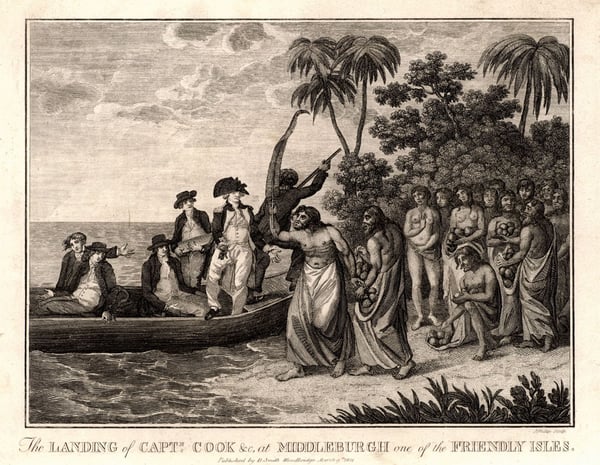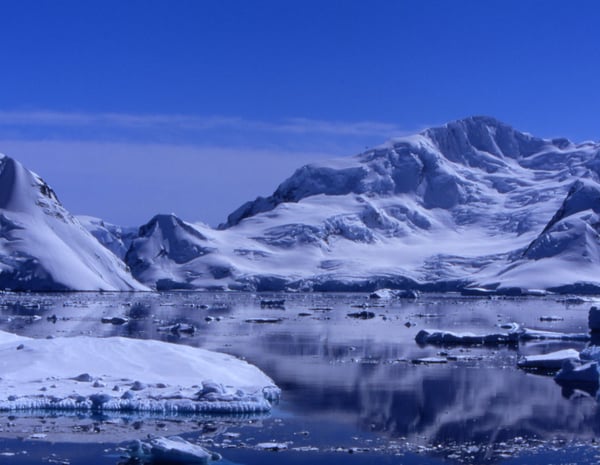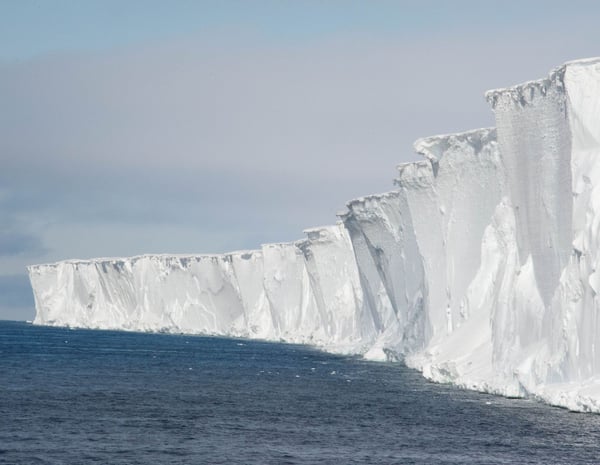Where does the term "blighty" come from
‘Blighty’ is an old-fashioned word fondly used to refer to the British homeland, especially by British people overseas, and is strangely apt for the British Antarctic Territory, which was formed on March 3, 1962, although the UK's claim dates back to legal depositions in 1908 and 1917. The pie-slice shaped territory extends to the South Pole and is bordered by the Argentinian and Chilean Antarctic claims (there are seven sovereign states in total with claims in the Antarctic) and now encompasses three regions that used to be administered by the British as separate dependencies before 1962, including the Falkland Islands.
Perhaps due to its remoteness, British values in some places seem to have remained frozen at a point about 50 years in the past, although the technology there is cutting edge. And it is the most popular region for Antarctic visitors for a variety of reasons, both historic and geographical, as it is relatively accessible, the climate is slightly milder than other Antarctic regions, and there is abundant terrestrial and marine wildlife as well as spectacular scenery, particularly in South Georgia.
The British presence in the Antarctic has a long history, dating back to explorers in the 1700s, most notably the British Captain James Cook, who was first to cross over into the Antarctic circle, in January 1773. His second expedition (1772–1775) changed global maps forever. Prior to this, world maps contained a huge land mass filling a large part of the southern hemisphere, known as Terra Australis. Cook debunked this idea, although massive ice floes prevented him from reaching Antarctica and land was not sighted.

A portrait of James Cook. Source: Canva
Towards the end of this trip, in 1775, Cook was at a remote spot 850 miles from the Antarctic peninsula and the same distance from the Falklands. He was the first to land on, map and survey the picturesque mountainous island of South Georgia, laying claim to it on behalf of King George III on January 17th. The island, with its numerous bays and fjords, historical whaling stations and sunken ships, is now the highlight of many Antarctic cruise experiences due to its abundant wildlife. It’s home, for example, to half the global population of Southern Elephant seals, especially at Gold Harbour on the southeast coast, which is also a popular spot for King penguins, Gentoo penguins, and fur seals. There are also historical whaling stations and sunken ships on the coast, legacies from a bygone era. And on January 5, 1922, during his last voyage on the Quest expedition ship, renowned polar explorer Shackleton died of a heart attack just before landing at South Georgia. He was buried at Grytviken, in Fortuna Bay.
Captain James Cook also discovered eight smaller islands, the Sandwich Islands, 400 miles to the southeast of South Georgia, naming them "Sandwich Land" after the 4th Earl of Sandwich, 1st Lord of the Admiralty. The islands were uninhabited and not settled for a long time due to their hostile climate and mountainous terrain. They were subsequently used for sealing, whaling, and scientific surveys and research. Argentina had a naval station on Thule Island in the South Sandwich Islands from 1976 until 1982, as it considered South Georgia and the Sandwich islands to form part of the Tierra del Fuego territory. This claim was a contributing factor in the 1982 Falklands War. These remote islands are now uninhabited and rarely visited. As such, they are a marvelous place to spot wildlife, especially penguins.

James Cook landing in the Friendly Islands. Source: Canva
The Antarctic peninsula, as the northernmost tip of Antarctica, was the first land mass of the continent to be sighted – almost certainly by 19th-century English-born sealer, John Davis, although sealers, like fishermen, were secretive about their movements and their logbooks were deliberately misleading, to protect any new sealing grounds from competition. It may also have been a British explorer who first set eyes on land in the region. On January 20, 1820, Royal Navy officer Edward Bransfield was on a British mapping expedition with William Smith when he saw “high mountains covered with snow”. Smith and Bransfield were the first to chart the extreme northeast portion of the Antarctic Peninsula. The next confirmed sighting was in 1832 by British explorer John Biscoe, who named the northern part of the Antarctic Peninsula Graham Land, after the First Lord of the Admiralty at the time.
 Graham Land. Source: Canva
Graham Land. Source: Canva
The Antarctic peninsula has the mildest climate in Antarctica and is thus free from snow on the mountaintops in summer months and is greener, with lichen, mosses, and algae, and especially abundant in krill – which attracts a large number of whales.
In 1823 British seal hunter Captain James Weddell set a new record for exploration to the south, sailing over 200 miles further south than Cook’s expedition fifty years earlier. The waters that he reached are now called the Weddell Sea and are home to the most southerly breeding land mammal in the world – the charming Weddell seal.
From 1831-32 Royal Navy commander, Sir James Clark Ross commanded two ships, the Erebus and the Terror, on an Antarctic expedition. (These ships were famously later lost when Franklin tried to find the North-West Passage.) He discovered the Ross Sea and the Ross Ice Shelf, which would later become the starting point for Scott and Amundsen’s race to reach the South Pole in 1911. An island and a species of seal unique to the area are also named after him.
 The Ross Ice Shelf. Source: Canva
The Ross Ice Shelf. Source: Canva
Visitors to the Falklands often remark that the capital, Port Stanley, is a bit like the Blighty of 50 years ago. The population of around 3,000 people is mostly of British origin and the longstanding British presence has largely shaped the culinary and cultural offer on the main islands, naturally incorporating local ingredients such as shellfish and Falklands trout. Although situated 8,000 miles from the UK and 300 miles from the Argentinian coast, the Falkland Islands have a long history as a British Overseas Territory since Captain John Byron claimed the islands for Britain in 1765 – although sovereignty has been disputed several times over since then. The inhospitable Falkland Islands were uninhabited when discovered.
In early 1770, five Spanish ships arrived from Buenos Aires carrying 1,400 soldiers and the British were forced to leave Port Egmont. This incident led to war, although the British government in any case decided to withdraw from many overseas settlements in 1774. Spain administered a garrison at Puerto Soledad on East Falklands from Montevideo until 1811, which it then had to abandon due to the Argentine War of Independence and the pressures of the Peninsula War back home. The British returned to the Falkland Islands in 1833.
 A map of the Falkland Islands. Source: Canva
A map of the Falkland Islands. Source: Canva
In relatively recent history, Argentina invaded and occupied the Falkland Islands on April 2, 1982, ultimately being forced to surrender after ten weeks of conflict. June 14th is now known as Liberation Day and is a public holiday in the Falklands. The Falkland Islands are now a popular wildlife tourism destination, famous for the colonies of penguins and albatrosses, sea lions, and elephant seals, 15 species of whales, dolphins, and a wide variety of birds (approximately 200 species), especially at Gypsy Cove or Volunteer Point, where there are King penguins.
To see a little slice of Blighty and walk in the footsteps of giants, visit: South Georgia and Scotia Sea, Gold Harbour and the Falkland Islands.




